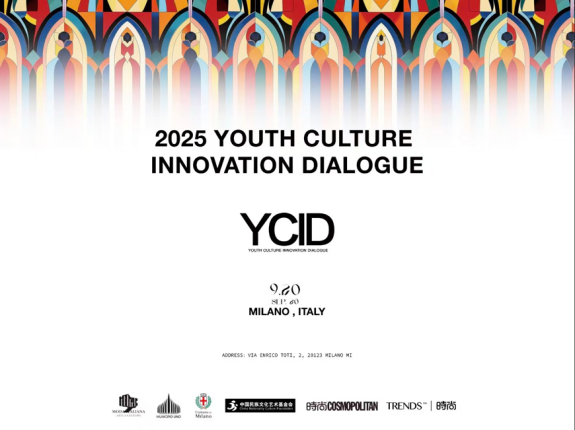
Approved by the Ministry of Culture and Tourism of China, the 2025 "Youth Culture Innovation Dialogue" Exchange Series—jointly organized by the China National Culture and Arts Foundation, Cosmo magazine, and the Italian Fashion and Cultural Arts Association, and co-hosted by the Three Hills and Five Gardens Cultural and Art Center of Haidian District, Beijing, together with Italy's Longjia Education Group—was successfully held in Milan from September 19 to 30.
Themed "Culture + Youth + Innovation", the series aimed to harness the power of youth to promote cultural exchanges and innovative cooperation between China and Italy, showcasing the latest achievements in mutual learning between the two civilizations. It also celebrated the 55th anniversary of China–Italy diplomatic relations. The program was supported by the Foundation's Special Fund for Youth Culture Innovation and Cooperation, with special assistance from the Municipality of Milan, the District 1 Government of Milan, and the International Institute for Heritage Studies (Italy).
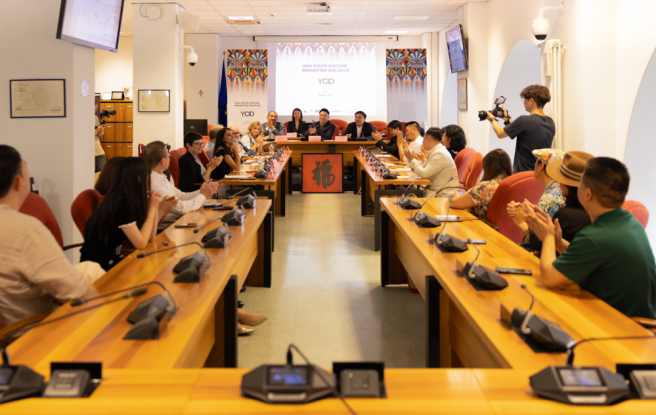
As a key component of the program, the Haidian Cultural Delegation, led by Ms. Sheng Chunru from the Three Hills and Five Gardens Cultural and Art Center, presented multiple achievements in digital cultural innovation and cultural tourism promotion. With technology as a bridge and culture as the medium, the delegation offered a cross-cultural feast centered on "intelligent digital technology," highlighting the creativity and vitality of Haidian's youth in cultural innovation.

On September 20, a "Cultural Innovation and Cooperation Dialogue" was held at the Council Hall of Milan's District 1 Government, where Chinese and Italian guests engaged in in-depth exchanges. Distinguished attendees included: Mattia Ibrahim Abdu Ismahil, President of Milan District 1 Government; Alessia del Corona Borgia, Vice President of Milan District 1; Francesca Liberatore, renowned fashion designer, member of the National Chamber of Italian Fashion, and Chair of Fashion Design at the Brera Academy of Fine Arts; Luca Fois, co-founder of Zona Tortona and Zona Sarpi of Milan Design Week and Professor at the School of Design, Politecnico di Milano; Michele Brunello, curator of the China City Pavilion at the Venice Biennale, Professor at the Department of Architecture, Politecnico di Milano, and acclaimed Italian architect; and Marta Meda, Professor at the School of Design, Politecnico di Milano, and leading Italian designer.
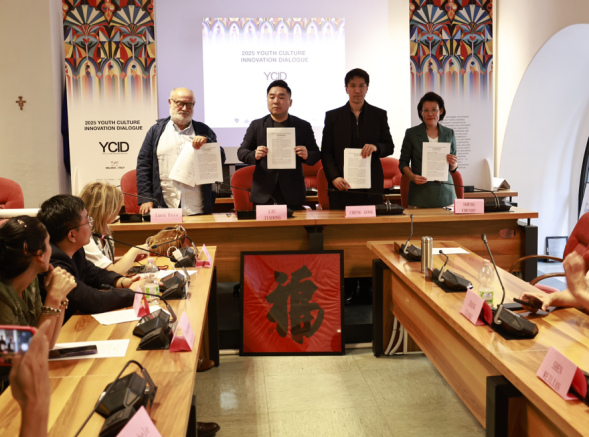
During the meeting, the Three Hills and Five Gardens Cultural and Art Center of Haidian District, Cosmo China, the China National Culture and Art Foundation, the Italian Fashion and Cultural Arts Association, and Luca Fois (co-founder of Zona Tortona and Zona Sarpi at Milan Design Week) jointly signed a cooperation agreement to establish the "2026 Sino-Italian Collaborative Consortium at Milan Design Week." This initiative aims to create a brand-new official program segment at Milan Design Week. The parties also jointly launched the "Youth Cultural Innovation Dialogue Declaration," proposing a new international cooperation mechanism to elevate Sino-Italian cultural innovation exchanges to new heights.
Ms. Sheng Chunru remarked, "As the core hub of China's technological innovation, Haidian is actively exploring new pathways for the digital dissemination of culture. We aim to uphold culture as the soul and technology as the bridge, enabling Chinese civilization to reach the world in a more modern and internationalized way."
Mr. Mattia Ibrahim Abdu Ismahil, President of Milan District 1, stated, "We highly value dialogue and cooperation and firmly believe that international exchange is key to shared development. We are confident that the young people of China and Italy will work hand in hand in culture, technology, and education to create a better future."
Mr. Luca Fois, Director of the Design Department at the International Institute for Heritage Studies (Italy) and co-founder of Zona Tortona and Zona Sarpi, added, "Youth is the source of creativity. Cooperation between Italy and China will open new frontiers in art, design, education, and digital technology." At the conclusion of the dialogue, the Three Hills and Five Gardens Cultural and Art Center of Haidian District presented a gift to the Milan District 1 Government.
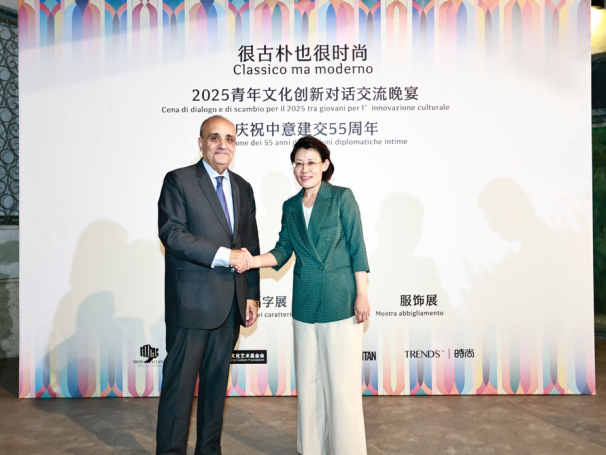
On the same day, the "Traditionally Rooted, Fashionably Modern" dinner reception and showcase took place at the historic Villa Necchi Campiglio in Milan. The event brought together distinguished guests from politics, business, and the arts, creating a vibrant atmosphere. The "Digital Cultural Relics" MR (Mixed Reality) experience presented by the Three Hills and Five Gardens Cultural and Art Center became the highlight of the evening. Former Italian Minister of Culture Alberto Bonisoli praised the experience, saying, "It felt as though I had traveled through time, witnessing the very scenes Marco Polo once saw. Technology has not diminished culture—it has made it more vivid and tangible."
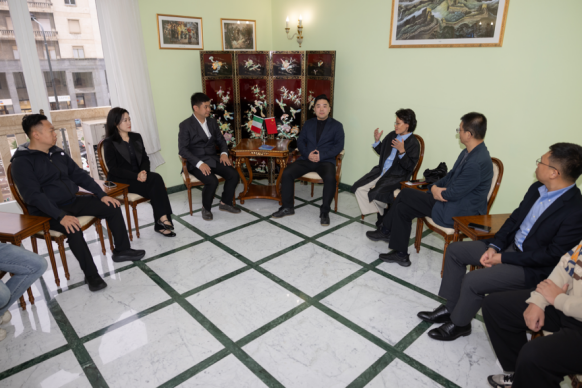
From September 21 to 23, Haidian representatives visited the China Council for the Promotion of International Trade (CCPIT) Representative Office in Italy, the ADI Design Museum, and other well-known institutions, museums, and art galleries. They held discussions on cultural heritage preservation and artistic innovation, explored potential avenues for cooperation, and presented appointment certificates to several renowned Italian designers and artists as cultural advisors.
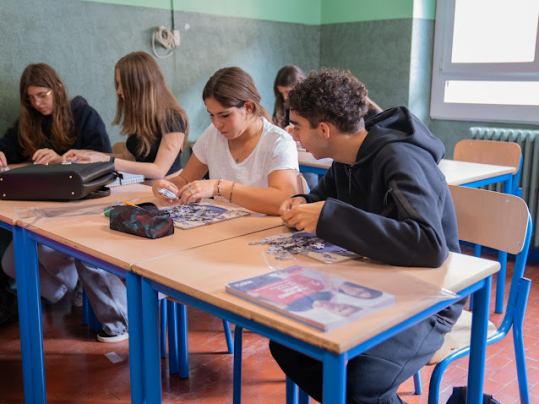
From September 24 to 30, the Haidian delegation brought its digital cultural innovations and promotional media into local schools and the Longjia Chinese Language and Taiji Classroom under the Center for Language Education and Cooperation (CLEC). Through creative workshops, MR "Digital Cultural Relics" experiences, and interactive "Chinese+" sessions, local students experienced firsthand the charm and vitality of Sino-Italian cultural exchange.
The series also featured a photography exhibition celebrating the 55th anniversary of China–Italy diplomatic relations, a fashion show of Chinese intangible cultural heritage garments blending Eastern aesthetics with modern design, and a Chinese fine arts invitational exhibition showcasing contemporary artworks. These events not only demonstrated the distinctive allure of traditional and modern Chinese art, but also offered immersive experiences and opportunities for deeper dialogue between Chinese and Italian audiences.
The successful conclusion of this series not only paid tribute to the 55th anniversary of China–Italy diplomatic ties but also marked a new starting point for youth-driven cultural innovation and cooperation between China and Italy—and between China and Europe. Looking ahead, both sides will continue to take youth as a bridge to foster long-term collaboration in culture, art, fashion, education, and digital technology, jointly writing a new chapter of mutual learning among civilizations and win-win cooperation. (By Han Wei)
Copyright ©1997- by CRI Online All rights reserved